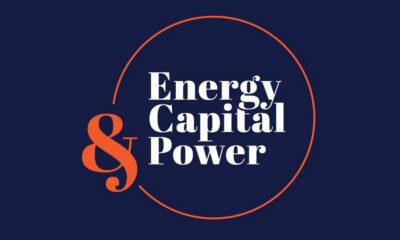Benchmarks show Huawei’s OceanProtect surpasses peer
JOHANNESBURG, South Africa, November 22, 2022/APO Group/ —
As modern enterprises hail data as the lifeblood of their business, comprehensive data protection has become paramount. Indeed, the accelerated pace of digital transformation in recent years has made data a fundamental and strategic business resource as well as a key production factor.
Already, data is being generated, consumed and stored at an unprecedented pace. According to IDC, global data creation and replication is growing at a compound annual growth rate of 23 percent from 2020 to 2025. In 2020, 64.2 ZB of data were created or replicated. The research firm reckons that the amount of digital data created over the next five years will be greater than twice the amount of data created since the advent of digital storage.
The data deluge is prompting prudent companies to refocus IT budgets on protecting data, especially their most critical business asset – production data.
Efficiency, performance, reliability
The cost of data protection aside, the major challenge for IT is to mitigate the risk of a devastating data loss in the face of mounting ransomware attacks and data breaches.
Further, the rapid development cycles of modern cloud-native application environments and evolving data-intensive applications – such as artificial intelligence, automation, Internet of Things and video surveillance – have increased the required levels of protection, performance and scale dramatically.
Such demands overwhelm the capabilities of traditional backup tools. In this exacting IT landscape, enterprises need data protection solutions that bear three critical attributes: highly efficient data reduction rates, fast backup and recovery performance, and highly reliable and available data copies
Data reduction efficiency enables enterprises to store and transfer large amounts of backup data expeditiously so they can optimize investments in storage hardware, increase effective capacity and reduce total cost of ownership.
Fast backup and recovery performance enables businesses to minimize operational downtime or disruption, especially in the aftermath of a ransomware attack. Underpinning these is reliability. Having a good, clean backup to recover from lays the foundation for an effective data protection strategy.
Geared to deliver these benefits, the Huawei OceanProtect data protection solution adopts a unified approach – protecting exabytes of structured and unstructured data generated by databases, file systems and VMware virtual machines (VMs) – that ensures zero service disruption, zero data loss, and long-term information retention.
Huawei OceanProtect outperforms peer
A recent report (https://bit.ly/3i0CJzG) jointly published by Evaluator Group presented results of comprehensive benchmarking tests that compare the Huawei OceanProtect (https://bit.ly/3ERCIqI) data protection system with a peer product, the Dell EMC PowerProtect DD, based on the three attributes mentioned above.
The test environment was configured for function and performance verification. Network connectivity and hosts had the same configurations. Each data protection system was connected to seven servers through IP switches. The Red Hat Enterprise Linux 7 x86_64 operating system was deployed on four of the servers for performance tests.
VMware virtualization applications and Oracle database applications were deployed on two servers to compare and verify data reduction ratios in different scenarios. The other server was used as the media server for the backup application Veritas NetBackup (NBU).
Rapid backup and recovery
To test backup and recovery speed, the primary tool utilized was vdbench in file mode. The aim is to accurately perform file operations while ensuring high I/O rates to files as desired. The choice of tool removes potential bottlenecks from the backup application as well as any bias for or against any third-party backup application.
The Huawei OceanProtect and Dell EMC PowerProtect systems each included a storage pool created with a 1 PB filesystem. The filesystem was then NFS mounted to eight mount points on each of the four machines running the workloads. High performance optimizations were set for both test systems.
Test results show that Huawei OceanProtect’s Oracle backup performance of 6,853 MB/s was 2.6 times faster than the 2,621 MB/s clocked by the peer product from Dell EMC. In the VM backup performance test, OceanProtect’s speed of 8,004 MB/s was 2.4 times faster than the peer product’s 3,383 MB/s.
The research firm reckons that the amount of digital data created over the next five years will be greater than twice the amount of data created since the advent of digital storage
Next, the write performance of both systems was measured by simulating the first full backup of general applications. Here, Huawei OceanProtect’s 10,591 MB/s was 2.3 times faster than the peer product’s 4.640 MB/s.
Overall, Huawei OceanProtect delivered more than two times faster backup data rates than its leading competitor. The test results bolster Huawei OceanProtect’s status as a solution that creates opportunities for improved system utilization, cost savings and management efficiency.
After the backup simulations, the read bandwidth recovery performance of both systems was simulated and tested. The application restore performance comparison showed that Huawei OceanProtect’s read bandwidth after the first backup is 1.5 times that for the Dell EMC system.
Since the recovery test was performed after the first backup, the read bandwidth of systems like Dell EMC’s, which use rotating media (i.e. hard disk drive), will decline as additional backups are created and backup data become scattered. In contrast, this has little impact on the all-flash OceanProtect system so its recovery speed advantage over those systems would increase with additional backups.
Efficient data reduction
The NBU application was used to verify the data reduction ratios of both products in daily full backups of Oracle database and VM data.
The Oracle database to be backed up was activated with the NBU client installed and user authentication on the NBU client and Oracle database completed. From the management pages of both systems, Evaluator Group observed that the data reduction ratio of Huawei OceanProtect for daily full backup of the Oracle database was 43.4, higher than the 28.1 for the Dell EMC product.
The Linux VM to be backed up was prepared on each solution’s VMware ESXi server. Again, the Huawei OceanProtect’s data reduction ratio of 29.3 for daily full backup of VM data was higher than the peer product’s ratio of 19.7.
By achieving approximately 50 percent greater reduction ratios for various data, Huawei OceanProtect has an effective capacity of nearly 50 percent greater than Dell EMC PowerProtect when configured with the same raw capacity.
OceanProtect’s high data reduction ratios is an endorsement of its efficient usage of data storage infrastructure. Using advanced algorithms and byte-level compaction technologies, OceanProtect breaks data into chunks based on the source and other data characteristics before it deduplicates, compresses and compacts the data further.
High reliability
The Evaluator Group also observed how the simultaneous failure of any three disks in a storage pool affects backup services on both backup storage systems.
The analysts installed and configured the file backup client, prepared the test data, and recorded the Message-Digest algorithm 5 (MD5) value of the test data. They created a 1 TB NFS file share in a storage pool on the Huawei OceanProtect system and a 1 TB Mtree NFS file share in a storage pool on the Dell EMC system. Strikingly, OceanProtect supports RAID triple-parity (RAID-TP) but the peer product does not.
The file shares were mapped to the backup server as a backup storage repository. The analysts then ran a full backup of the files on the two systems. Data from this completed backup was then restored. The success of the recovery was verified by calculating the MD5 value of the restored file and using it to check the integrity of the restored data.
Meanwhile, the full backup job was run on the common file again. When this job was initiated, three disks were removed from the storage pool. Then, the status and alarms of the affected storage pool as well as the running status of the backup task were checked.
Consequently, the backup services of Huawei OceanProtect remained normal and showed no loss of access to data, but the backup services of the peer product from Dell EMC reported errors. Equipped with dual-controller active-active architecture, RAID-TP and ransomware prevention technologies, Huawei OceanProtect is well positioned to deliver 99.9999 percent availability, as can be shown by real-life examples beyond the lab.
Conclusion
The Evaluator Group’s test results evidently show that the Huawei OceanProtect outperforms the peer product in all three critical aspects: data reduction ratio, backup and recovery speed, and reliability.
Significantly, Huawei OceanProtect’s superior capabilities translate to shorter backup windows and data recovery times, reduced expenditure, and higher levels of uptime. They also affirm OceanProtect’s trustworthiness as an intelligent all-flash backup storage designed to address enterprises’ data protection pain points in a dynamic, data-intensive digital economy.
To know more about Huawei OceanProtect, please click here (https://bit.ly/3OtHihX).
Distributed by APO Group on behalf of Huawei Enterprise.


 Business4 days ago
Business4 days ago
 Business4 days ago
Business4 days ago
 Business4 days ago
Business4 days ago
 Business3 days ago
Business3 days ago
 Business4 days ago
Business4 days ago
 Business4 days ago
Business4 days ago
 Business4 days ago
Business4 days ago
 Business4 days ago
Business4 days ago














